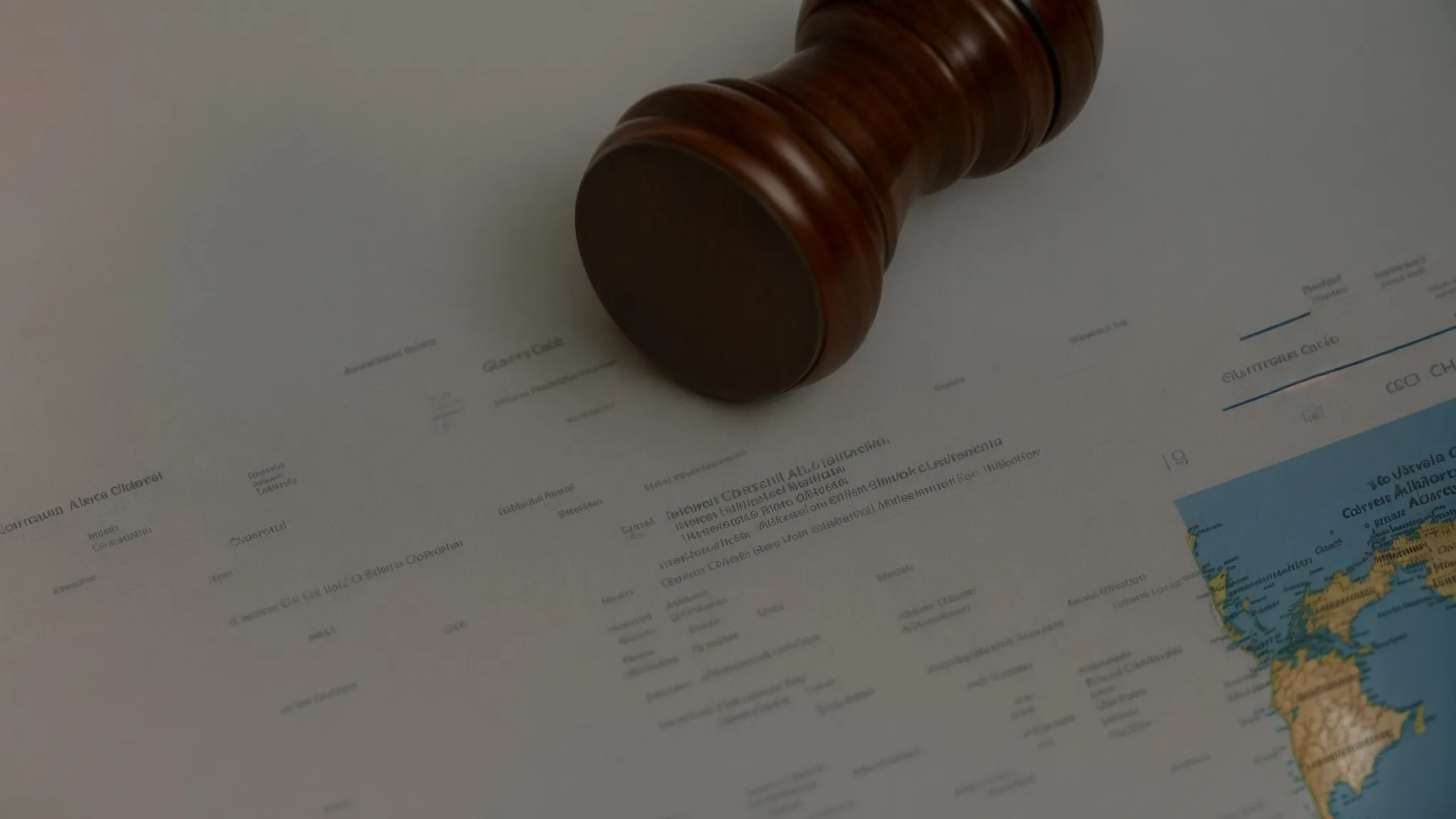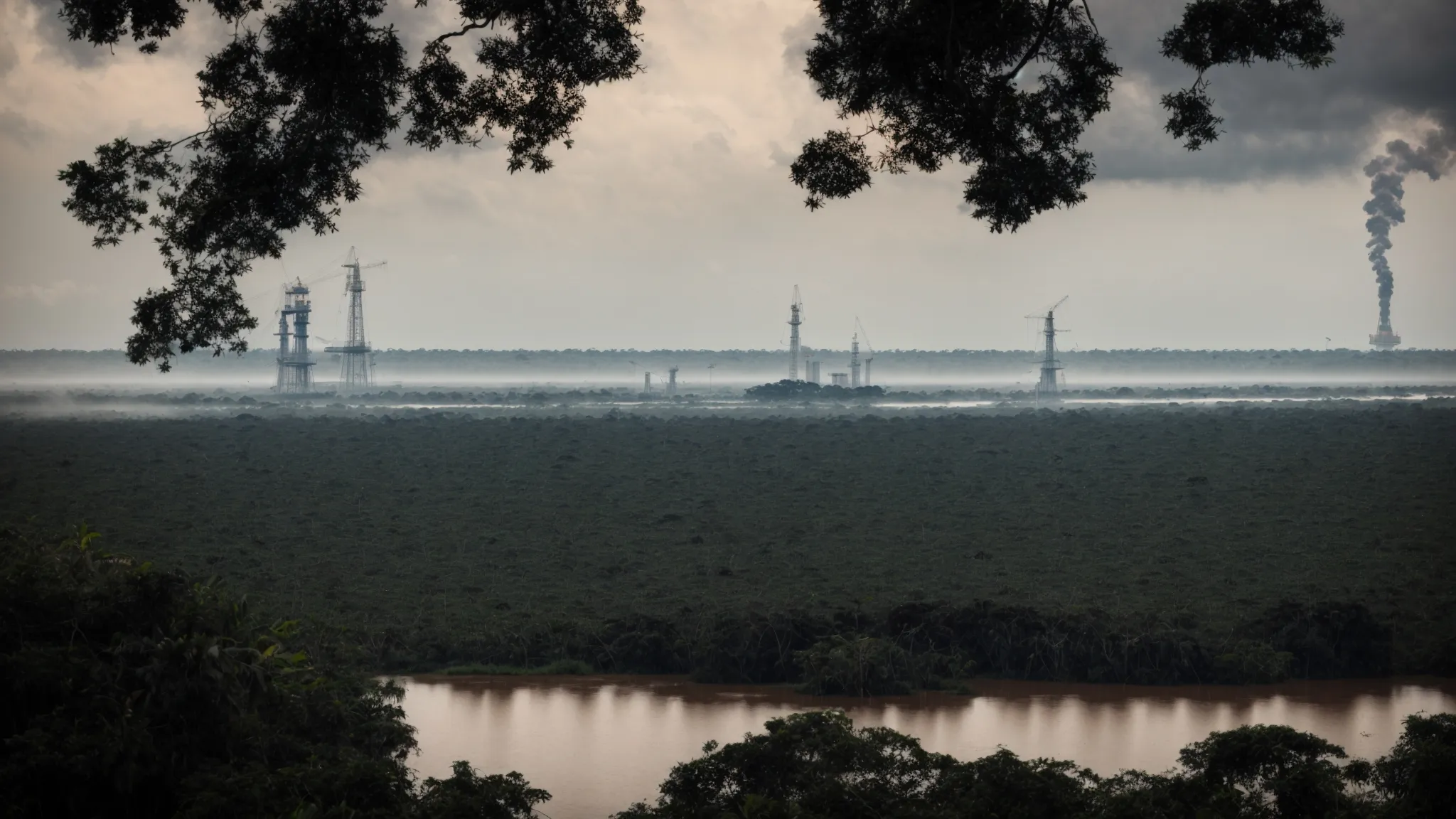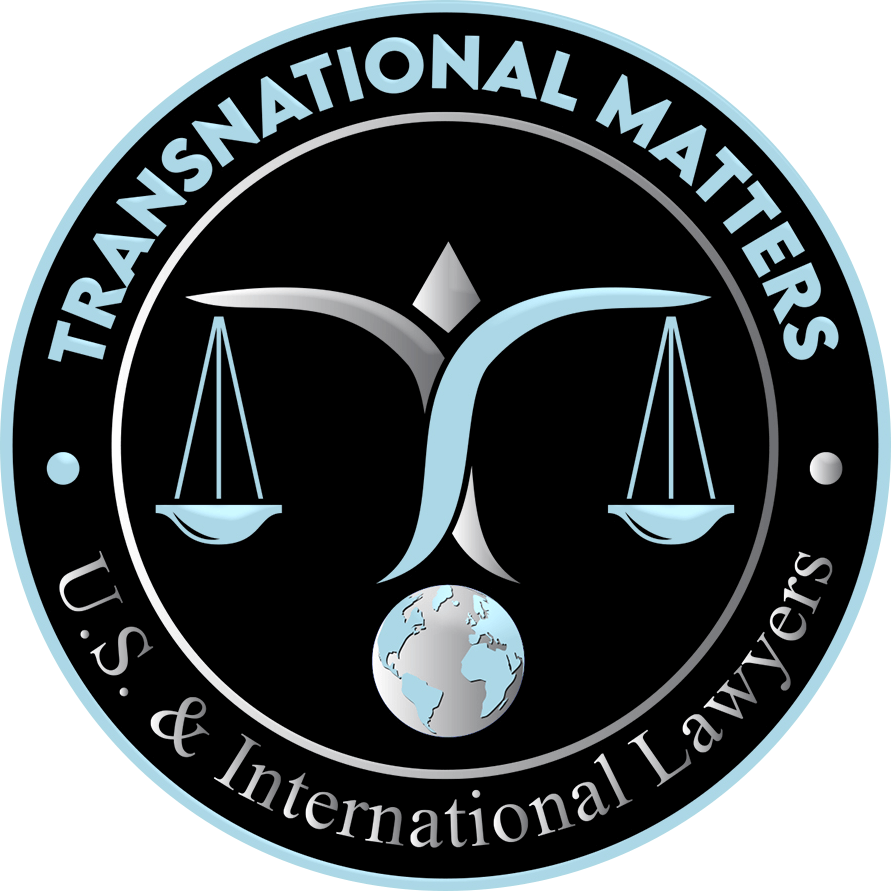Key Lessons From the Chevron vs Ecuador ISDS Case
In an era where multinational corporations and sovereign nations grapple for power, the Chevron vs Ecuador case unfolds as a pivotal saga of legal struggle and environmental accountability.
This clash saw the intricate mechanisms of the International Settlement of Investment Disputes (ISDS) tested as Ecuador summoned Chevron to account for alleged oil pollution in the Ecuadorian Amazon.
With each turn of the page, this case illustrates not only the challenges faced by indigenous communities but also the paramount importance of investment treaties and the defense strategies employed by global corporations.
The saga, replete with turns of legal strategy and international law, sets a profound precedent for future ISDS claims.
To discover the critical insights gleaned from this landmark dispute, keep reading and unveil the intersection of environmental justice and arbitration">international arbitration.
Key Takeaways
- The Chevron vs Ecuador Dispute Highlights the Complexities of ISDS Systems and Their Effects on National Sovereignty and Environmental Legislation
- International Investment Law Plays a Crucial Role in Balancing Corporate Interests With the Protection of Indigenous Communities and Ecosystems
- ISDS Proceedings Can Significantly Influence a Nation’s Policy-Making and Economic Priorities, Often at the Cost of Taxpayers
- The Case Underscores the Importance of Aligning Corporate Operations With Sustainable Development and Social Responsibility Principles
- Chevron’s ISDS Case With Ecuador Underscores the Necessity for Corporations to Invest in Comprehensive Legal Risk Assessments and Preventative Compliance Strategies
Understanding the ISDS Framework Through Chevron vs Ecuador

The Chevron vs Ecuador dispute stands as a pivotal case study in the realm of international investment law, providing insights on the complexities of the Investor-State Dispute Settlement (ISDS) system.
By delving into the legal battles that ensued after oil pollution in the Ecuadorian Amazon was brought to light, stakeholders are given a glimpse of the power dynamics between corporations, indigenous communities, and nations.
This battle illustrates the strenuous nature inherent in interpreting investment treaty provisions, particularly when addressing alleged expropriations and the rigorous demands of adhering to host states’ environmental legislation.
An exploration into the Chevron case underlines the profound effects ISDS mechanisms can have on the sovereignty, legal frameworks, and economic health of nation-states entangled in disputes with formidable corporate entities.
Highlighting the Role of International Settlement of Investment Disputes
The Chevron vs Ecuador saga serves to amplify the critical role of the International Settlement of Investment Disputes (ISID) in moderating conflicts between multinational firms and host nation-states. A tribunal convened under the auspices of the International Centre for Settlement of Investment Disputes (ICSID) becomes a panel of Arbitrators, arbitrating over complex legal and financial matters that transcend national jurisdictions.
This legal platform provided Ecuador a venue to challenge a multinational corporation, raising substantial issues regarding the alleged expropriation of assets and breach of investment agreements:
- The initial complaint by Ecuador focused heavily on the environment and human rights implications stemming from Texaco’s oil operations, acquired by Chevron.
- Subsequently, the ISDS tribunal navigated a labyrinth of legal claims, dissecting the interplay between investment law and the sovereign right to enforce environmental legislation within its territory.
The Chevron case underscores the function of ISDS as a dispute settlement mechanism designed to offer impartiality and enforceability, which is crucial when the stakes include significant investment treaty rights and responsibilities. Such proceedings demonstrate the seismic influence of international investment law, where corporate actions intersect with the sensitivities of nation-building and the welfare of indigenous peoples.
Interpreting the Key Provisions Invoked in the Chevron Case
In the Chevron vs. Ecuador standoff, the legal whirlwind centered on the concept of ‘fair and equitable treatment’ as mandated by investment treaties. Litigators for the oil company postulated a breach of trust, positing that Ecuador failed to provide a conducive investment climate as stipulated by bilateral agreements, a contention that necessitated a rigorous interpretation of complex international investment law by the presiding arbitrators.
Another crucial aspect scrutinized by the panel entailed the principle of ‘effective means,’ which mandates nations to offer investors access to judicial remedies of a functional nature. Chevron’s advocates argued the deterioration of this provision, taking aim at the Ecuadorian legal system’s capability to address the dispute adequately, challenging its competence, and invoking grounds that questioned the integrity of domestic judicial proceedings.
The Impact of ISDS Mechanisms on Nation-States
The Chevron vs Ecuador saga offers a stark illustration of ISDS mechanisms’ capacities to shape national policy-making. As governments grapple with the judgments handed down by ISDS tribunals, they may face the need to recalibrate their legislative and regulatory approaches to reconcile with international investment law directives and to safeguard against potential disputes.
Equally, the outcomes of ISDS panels can demand substantial compensation from a nation, draining taxpayers’ bank accounts and potentially influencing a country’s fiscal priorities and development agendas. This has raised questions about the balance between attracting foreign investment and preserving the regulatory autonomy of host states.
The Precedents Set by the Chevron vs Ecuador Outcome

The adjudication of the Chevron vs Ecuador dispute has ripple effects that travel far beyond courtrooms and tribunal halls, setting critical legal precedents that promise to steer future ISDS cases.
The resolution of this conflict echoes through the corridors of power, shaping investment law, leaving a mark on environmental and social governance frameworks globally.
As practitioners and policy-makers dissect the ruling, the case continues to resonate, influencing how similar disputes will be approached and potentially recalibrating the relationship between arbitration">international arbitration panels and the urgent need to safeguard ecological and community interests.
Examining the Legal Precedents Established
The Chevron vs Ecuador case etched a notable mark on the canvas of ISDS jurisprudence, particularly regarding the deference paid to national courts by international tribunals. This litigation emphasized the need for international arbitrators to carefully assess the capability and impartiality of domestic legal systems before rendering a decision that might override national proceedings.
Furthermore, this outcome reverberated through the investment law framework, highlighting the delicate balance between compensatory justice for investors and the imperatives of national sovereignty. The judgment prompted a reevaluation of the narrative that multinational corporations can exert over a state’s environmental and social policies through ISDS channels.
How the Outcome Affects Future ISDS Cases
The determination in the Chevron vs. Ecuador dispute charts a course for future arbitrations, signaling to both international corporations and host nations the stringent scrutiny and legal rigor expected in ISDS cases. The nuanced examination of environmental and social considerations, in this case, embeds a deeper awareness within the investment community, which now must weigh the potential for public scrutiny and legislative action against their operational strategies.
This landmark case reinforces the position that adherence to international investment agreements and respect for a nation’s sovereign rights are not mutually exclusive concepts. As future ISDS tribunals navigate conflicts, they must consider the precedent set forth, understanding that the reconciliation of investment protection with human rights and environmental stewardship is imperative in rendering balanced and fair judgments.
Implications for Environmental and Social Governance
The Chevron vs Ecuador ISDS case heralds a pivotal moment for the interplay between environmental and social governance and multinational corporate accountability. It magnifies the expectation that companies must consider the ecological and human impact of their operations, aligning their business models with the principles of sustainable development.
The dispute’s resolution has emboldened communities and environmental advocates, asserting that corporate operations cannot sidestep social responsibilities or undermine host countries’ environmental legislation. This case becomes a beacon, signaling the imperative that, even in rigorous pursuit of profits, corporations must navigate within the framework of social and ecological stewardship:
- Corporate strategies must reflect an ingrained responsibility toward environmental preservation and social welfare.
- Investors are called to recognize that their actions bear consequences that resonate with the health of the planet and its inhabitants.
- ISDS outcomes carry the potential to influence corporate behavior, stressing the need for ethical and sustainable investment practices.
Ecuador’s Environmental Challenge and Legal Strategy

The Chevron vs Ecuador ISDS case has emerged as a seminal battle over the tension between economic interests and environmental stewardship, one that serves to educate on the entwined paths of international law, environmental justice, and diplomatic strategy.
As Ecuador mounted evidence of the extensive ecological detriment attributable to Chevron’s predecessor, Texaco, the stage was set to review not only the palpable environmental repercussions but also the resilience of Ecuador’s legal maneuvers against an oil titan.
The ensuing tussle raised pertinent questions about the robustness of international law in mediating environmental disputes, marking a decisive moment for nations wrestling with the dual imperatives of safeguarding natural landscapes and upholding judicial rigor within the high-stake arenas of international arbitration.
Mapping Ecuador’s Environmental Allegations Against Chevron
Ecuador’s litigation against Chevron highlighted allegations of widespread environmental damage attributed to the oil operations formerly conducted by Texaco. The nation pointed to extensive oil pollution in the Ecuadorian Amazon, accusing the oil company of causing severe harm to the ecosystem and the health of indigenous communities living in the affected area.
The legal team, led by the determined Lawyer Pablo Fajardo, structured their allegations around a series of key points, including:
- The magnitude of oil pollution that infiltrated rivers and forests, disrupting the lives and traditions of thousands of indigenous peoples.
- Alleged violations of environmental and human rights standards that clashed with both Ecuadorian legislation and international guidelines.
These charges aimed to hold Chevron accountable for what was termed as one of the most egregious environmental disasters in history, seeking remediation and compensation for the impacted communities and ecosystems. Ecuador’s strategy underscored the conflict between corporate investment interests and the enduring guardianship of environmental resources.
Reviewing the Legal Strategies Employed by Ecuador
Ecuador’s pursuit of justice against Chevron showcased a steadfast adherence to the principles of international law and environmental rights. The government meticulously presented allegations of the oil company’s failure to adhere to the standards of ecological protection, emphasizing the need for reparation for the degradation caused.
The nation’s focus on the systemic impact of the environmental harm sought to not only address the immediate concerns but also to establish a precedent ensuring that future oil operations in sensitive regions would respect human rights and the environment. Ecuador envisioned setting a global benchmark for corporate environmental accountability through its legal strategy in the Chevron case.
The Role of International Law in Environmental Disputes
The Chevron vs Ecuador saga foregrounds how international law shapes the battleground for environmental disputes, delineating the rights and obligations that govern cross-border corporate behavior. These frameworks serve as the linchpin for assessing accountability and deliverability of justice in matters where domestic policies intersect with global environmental norms.
Through the lens of such high-stakes disagreements, international law emerges as a dynamic tool tasked with the delicate balance of protecting ecological sanctity while fostering equitable resolutions. Its role is not merely adjudicative but extends to shaping international discourse on sustainable development and corporate responsibility.
Chevron’s Defense and Counterclaims in the Dispute

In the wake of widespread accusations and intense legal scrutiny, Chevron mounted a robust defense to confront the allegations of environmental damage and human rights abuses in the Ecuadorian Amazon.
In this intricate phase of the Chevron vs Ecuador ISDS case, the corporation not only refuted claims presented by the plaintiffs but also engaged in proactive legal maneuvering, utilizing counterclaims to fortify its legal stance.
Analyzing Chevron’s defense unveils the strategic underpinnings of corporations’ responses in high-stakes investment disputes, reflecting on the implications of such defenses for the broader ISDS framework.
The unfolding of these counterclaims in the tribunal’s arena offers a deeper view into the corporate viewpoint on ISDS protocols and their ramifications for jurisprudence and diplomatic relations.
Analyzing Chevron’s Defense Strategy in the Litigation
In defending itself against the extensive claims made by Ecuador, Chevron constructed a multi-layered legal defense that pivoted on challenging the legitimacy of the Ecuadorian court’s verdict. The oil corporation argued that the judgment was the product of fraud and judicial corruption, an assertion intended to discredit the prior rulings and cement its stance against the hefty fines imposed.
Chevron’s strategy also involved a counteroffensive aimed at shifting the responsibility onto the nation of Ecuador itself, stating that any ensuing environmental damage was the result of the government’s own negligence or the national oil company’s operations post-Texaco era:
- The corporation sought to invalidate Ecuador’s allegations, bringing into question the very foundations of the Ecuadorian legal proceedings.
- It launched a campaign to safeguard its global assets, underscoring the potential repercussions of non-compliance with ISDS tribunal decisions on international investment.
The Use of Counterclaims as a Defensive Tactic in ISDS
Counterclaims serve as a strategic bulwark within the ISDS framework, and Chevron’s deployment of such countermeasures in this seminal dispute illustrates how corporations can adopt a dual role of defendant and plaintiff. These legal pivots allow the company not only to defend against allegations but also to assert its own claims, potentially offsetting liability or even redirecting it back to the accusing party.
By engaging counterclaims, Chevron sought to underpin its defense with an offensive strategy, thereby complicating Ecuador’s legal offensive and invoking additional scrutiny over the nation’s environmental and regulatory frameworks. This maneuver demonstrates the tactical complexity inherent in ISDS proceedings and the multifaceted roles parties must navigate:
- Chevron endeavors to discredit the initial allegations by presenting its own claims against Ecuador.
- The oil company pushes the boundaries of ISDS defense tactics, aiming to challenge, destabilize, and ultimately reverse the narrative established by the plaintiff nation.
Corporate Perspectives on ISDS and Their Implications
Chevron’s strategic approach to the ISDS underscores a view shared by many multinationals—that such mechanisms offer a necessary layer of protection for international investments against unpredictable policy shifts in host nations. The corporation’s reliance on ISDS counterclaims functioned to challenge the claims against it and reassert the fundamental corporate belief in the value of international arbitration as a safeguard of their global investments and risk management processes.
The implications of Chevron’s defense resonate across the corporate world, influencing how companies perceive their legal standing within international frameworks. By engaging with ISDS, corporations signal to host states the importance of stable and predictable legal environments, reinforcing the notion that international investment law can operate as an effective deterrent against unfair treatment that may arise from sovereign actions.
The Intersection of Sovereignty and International Arbitration

The Chevron vs Ecuador case sheds light on a crucial aspect of international investment disputes: the delicate nexus between a nation’s sovereignty and the authority of international arbitration courts.
This intersection, often fraught with contention, raises profound questions about the jurisdictional scope of international tribunals and their influence on national governance and policy-making.
Evaluating debates on state sovereignty within the Investor-State Dispute Settlement (ISDS) framework, balancing the prerogatives of a nation against the rulings of arbitration panels, and considering the jurisdictional challenges highlighted by the Chevron dispute, we unlock a greater understanding of the intricate tensions that underpin legal cases of this magnitude.
Evaluating the Debate on State Sovereignty in ISDS
The Chevron vs Ecuador encounter has ignited a salient debate on the interplay between state sovereignty and the authority of international arbitration. The core contention revolves around the ability of ISDS tribunals to issue rulings that might significantly impact the legislative and judicial autonomy of nation-states.
Amid this tussle, nations assert their sovereign right to self-determination, especially regarding internal environmental and social regulations, while tribunals deliberate on the legal obligations derived from international investment agreements and treaties:
- Nations grapple with the implications of submitting domestic judgments to international scrutiny, where investment treaties and arbitration panels hold sway.
- ISDS outcomes potentially influence national policies, raising the question of whether sovereign interests are duly respected or subordinated to corporate claims under international law.
This friction underscores the challenging task that international arbitrators face: navigating the decision-making process while honoring the delicate sovereignty of host states without compromising the enforcement of investment treaties.
The Balancing Act Between National Interests and Arbitration Rulings
The Chevron vs Ecuador dispute exemplifies the intricate equilibrium that must be struck between a state’s sovereign prerogatives and the authoritative rulings of international arbitration courts. As such, the case illuminates the significant strain that ISDS proceedings can place on this balance, bringing to the forefront the tension between respecting national legislation and upholding foreign investors’ rights under international law.
The challenge lies in harmonizing the protective measures that countries implement to conserve their natural and societal assets with the legal expectations established by arbitration tribunals. In the Chevron litigation, the tribunal’s mandate to impartially judge claims under investment law underscored the inherent complexities in satisfying both national interests and the principles of international arbitration without diminishing either party’s rights or sovereignty.
What the Chevron Case Teaches Us About Jurisdictional Challenges
The Chevron vs Ecuador case amplifies the jurisdictional challenges in the ISDS landscape. The debates unfurling from this legal confrontation underscore the tension between the reach of international arbitration and a nation’s jurisdiction over its domestic affairs.
This case acts as a beacon, guiding future ISDS disputes by demonstrating the delicate nature of enforcing international agreements while meticulously avoiding overreach into a state’s sovereign domain.
Lessons for Global Corporations Facing ISDS Claims

The resolution of the Chevron vs Ecuador case within the arena of the Investor-State Dispute Settlement (ISDS) system has unveiled critical lessons for multinational enterprises engaged in global operations.
This legal battle has thrown into sharp relief the myriad risks companies may confront in international jurisdictions, necessitating a re-examination of their approach to investment and dispute resolution.
As a result, it has become crucial for corporates to distill strategic insights from this dispute, adopt effective preventive measures, and ensure rigorous compliance strategies to address potential ISDS claims preemptively.
These lessons herald an era of heightened due diligence and strategic foresight for global corporations, underscoring the importance of legal preparedness in safeguarding their interests across borders.
Understanding the Corporate Risks in International Operations
Global corporations embarking on international ventures must acknowledge a multifaceted landscape of risks, particularly evident in the aftermath of the Chevron vs Ecuador ISDS case. It is paramount for such entities to recognize that beyond financial jeopardies, operational intricacies may implicate a myriad of local and international legal systems, each with its distinct regulatory compliance demands.
Moreover, as seen from the protracted legal tussle in the Chevron saga, multinational enterprises must remain vigilant of the evolving nature of global investment law. Firm vigilance in understanding international arbitration’s potential impact on operational liberties and corporate reputation is essential as it forms the crucible where future disputes may be adjudicated.
Strategic Insights for Corporations Involved in ISDS Disputes
Corporations facing the realities of the ISDS landscape, as evidenced by the Chevron vs Ecuador case, must prioritize the alignment of their overseas operations with both the host nation’s laws and international norms. Investing in a comprehensive legal risk assessment before embarking on foreign ventures becomes not merely advisable but essential, safeguarding against potential ISDS claims and ensuring that corporate practices respect the tenets of sustainable investment and community welfare.
It becomes increasingly important for companies to adopt a proactive stance toward dispute resolution, actively engaging with host states and local communities to mitigate conflicts before they escalate to international tribunals. The Chevron dispute serves as a stark reminder that building robust relationships grounded in mutual respect and transparency is critical for corporations seeking to navigate the intricate web of ISDS protocols and maintain a positive standing in the arenas of global commerce and public opinion.
Preventive Measures and Compliance Strategies Post-Chevron vs Ecuador
In the wake of the Chevron vs Ecuador case, global corporations are taking renewed stock in implementing rigorous compliance strategies. Recognizing the gravity of ISDS claims, entities now anchor their operational policies firmly in the principles of international best practices, ensuring adherence to local environmental and social standards:
| Preventive Measure | Objective | Compliance Strategy |
|---|---|---|
| Environmental Impact Assessments | Mitigate Ecological Risks | Adherence to United Nations Framework and Local Legislation |
| Community Engagement | Build Trust with Indigenous Peoples | Transparent Dialogue and Sustainability Pledges |
| Legal Risk Analysis | Minimize Exposure to ISDS Claims | Rigorous Review of Investment Treaties and Host State Laws |
The scrutiny afforded to risk mitigation strategies intensifies, focusing on building comprehensive frameworks that preclude potential disputes. Corporations are revising investment approaches to anticipate and address the intricacies of ISDS mechanisms, with prioritization on developing a thorough understanding of cross-border legal intricacies and nurturing informed partnerships with host states and local stakeholders.
Conclusion
The Chevron vs Ecuador ISDS case offers vital lessons for multinational corporations involved in international operations.
It underlines the significance of understanding the complexities of global investment law and the risks inherent in foreign jurisdictions.
Corporations are now more aware of the need to align their practices with not only local laws but also international standards, particularly regarding environmental and social responsibilities.
The case emphasizes the importance of conducting thorough legal risk assessments and engaging proactively with host countries and local communities to prevent disputes from reaching international tribunals.
As a result of this legal battle, there is a heightened recognition of the need for legal preparedness, comprehensive compliance strategies, and the adoption of preventive measures to mitigate the risk of ISDS claims and secure corporate interests across borders.
Our law firm has substantial experience within the realm of Investment Dispute. Contact our Office today to learn more


